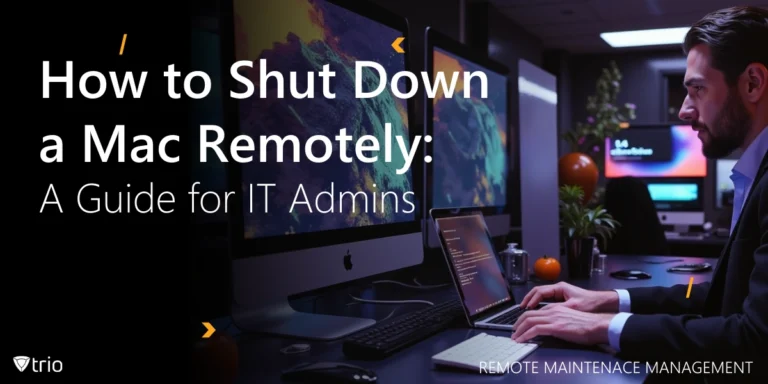The function of any organization’s IT department is to keep its technology systems and infrastructure running smoothly. As people depend more on technology to streamline operations, stay competitive, and cut costs, managed security service providers play a crucial role in supporting IT departments by offering specialized security services. There are defined roles within IT, with clear responsibilities associated with each role, and MSSPs can help enhance these efforts by providing additional security expertise and resources.
Key IT Department Roles and Their Core Responsibilities
The roles with specific responsibilities within an organization’s IT department include:
Chief Information Officer
The Chief Information Officer, or CIO, manages the whole IT division of an organization, coordinates technology plans with organizational objectives, and makes important choices regarding the organization’s technological course and future deployments. Some of the key responsibilities of the role include:
- Setting strategic IT goals and policies
- Supervising large IT projects and managing the budget
- Ensuring adherence to security and technological standards
- Coordinating with executives or heads of the departments to match IT with business goals
Chief Technology Officer
The Chief Technology Officer, or CTO as commonly referred to, focuses on new product development and technological innovation. The main responsibilities of the role are:
- Overseeing a project’s technical components and making sure that upcoming technologies are adopted
- Collaborating closely with the development and engineering teams
IT Manager
An IT Manager oversees the daily activities and ensures systems function properly. Key responsibilities include:
- Managing IT support staff and resources
- Keeping an eye on the security and performance of IT systems
- Planning and carrying out IT projects (such as installations and upgrades)
- Troubleshooting technical problems and making sure IT policies are followed
Network Administrator
A Network Administrator oversees network configuration and guarantees safe channels of communication. The main responsibilities include:
- Maintaining routers, switches, and firewalls
- Keeping an eye on network performance and troubleshooting problems
- Putting in place network security measures
- Managing user access and permissions
System Analyst
A System Analyst oversees and maintains computer networks and servers. The key responsibilities of a System Analyst are:
- Installing, configuring, and maintaining operating systems and software
- Monitoring system capacity and performance
- Performing routine backups and disaster recovery
- Ensuring that systems are well secured from any form of vulnerabilities
IT Support Specialist
An IT Support Specialist offers technical help in fixing network, hardware, and software problems. The main responsibilities of an IT Support Specialist include:
- Installing and configuring hardware and software
- Troubleshooting and resolving issues arising from all the users
- Offering training and advice to staff on new and emerging technologies
- Managing support requests and escalating issues as appropriate
Cybersecurity Specialist
A Cybersecurity Specialist guards company data and IT infrastructure against cyberattacks. The key responsibilities of the role include:
- Keeping an eye on security alerts and handling incident response
- Putting in place security measures like firewalls and encryption
- Carrying out routine security audits and assessments
- Training personnel in security best practices
Database Administrator
A Database Administrator oversees the storage of data and guarantees its accessibility and integrity. The chief responsibilities of a Database Administrator are:
- Installing and configuring database systems
- Tracking and improving database performance
- Regularly backing up and recovering databases
- Guaranteeing data security and compliance

Software Engineer/Developer
A Software Engineer/Developer creates, constructs, and manages software programs. The main responsibilities of a Software Engineer are:
- Creating, evaluating, and implementing software solutions
- Working together with other departments to collect necessary information
- Keeping up with and enhancing current software
- Verifying that the program is safe and scalable
Cloud Engineer
A Cloud Engineer develops and oversees cloud systems, making sure they are scalable, secure, and economical. Key responsibilities include:
- Building and deploying cloud infrastructure
- Controlling expenses and overseeing cloud resources
- Guaranteeing cloud application and data security
- Resolving cloud-related problems and issues
Project Manager
A Project Manager leads IT projects, making sure they are completed on schedule, within scope and within the budget. The main responsibilities of a Project Manager are:
- Specifying deliverables, scope, and goals for the project
- Overseeing finances, resources, and schedules for projects
- Liaising with stakeholders and technical teams
- Tracking project development and addressing project-related problems
Development and Operations Engineer
A Development and Operations Engineer serves as a link between operations and software development, emphasizing automation and continuous deployment. The chief responsibilities of a Development and Operations Engineer are:
- Automating the processes used in software development
- Tracking the dependability and performance of the application
- Administering the Infrastructure as Code methodology
- Working together with developers to ensure efficient deployments
Any modern organization’s backbone is its IT department, which ensures that systems are reliable, secure, and in line with business requirements. To effectively handle technological difficulties, optimize IT performance, and streamline operations, implementing IT process automation is crucial. Having a well-structured IT department with clearly defined responsibilities further enhances efficiency and drives overall success.
Get Ahead of the Curve
Every organization today needs a solution to automate time-consuming tasks and strengthen security.
Without the right tools, manual processes drain resources and leave gaps in protection. Trio MDM is designed to solve this problem, automating key tasks, boosting security, and ensuring compliance with ease.
Don't let inefficiencies hold you back. Learn how Trio MDM can revolutionize your IT operations or request a free trial today!




